Afterimage
29 March 2012 2 Comments
The Jesus Optical Illusion is a popular afterimage illusion. Stare at the dots in the center of this image for approximately 60 seconds. When the time is up, quickly close your eyes and look at a bright light source (like a lamp). Alternatively, you can also look at a blank wall. You should see a white circle with an image inside of it.

What did you see?
If you can get it working properly, you should see an image of Jesus. That certainly makes this a very powerful optical illusion!

Loading...
Tagged in afterimage, jesus
Estimation
25 March 2012 No Comments Yet - Share Your Thoughts
Which orange circle in the image below is bigger?
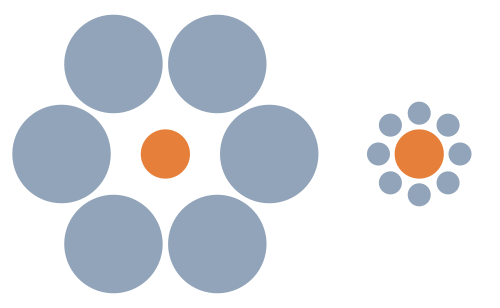
Believe it or not, both orange circles are the same size. The larger circles surrounding the one on the left give it the appearance than it is smaller than the one on the right (surrounded by smaller circles). This illusion is known as the Ebbinghaus illusion as it was discovered by a German psychologist by the name of Hermann Ebbinghaus.

Loading...
Tagged in ebbinghaus, estimation
Estimation
24 March 2012 No Comments Yet - Share Your Thoughts
Looking at the figure on the left, does the blue or red line appear to intersect with the black line to the left?
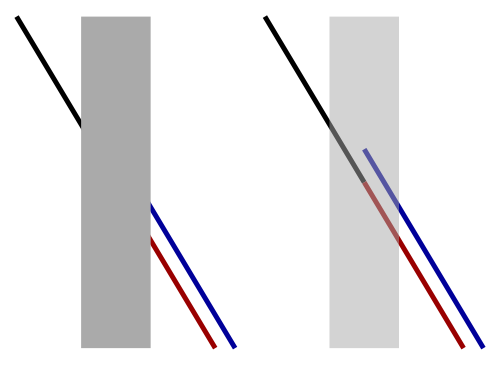 While it doesn’t look like it, the red line is actually aligned with the black line as shown on the figure to the right. This illusion is known as the Poggendorff Illusion as it was discovered by German physicist Johann Christian Poggendorff in 1860.
While it doesn’t look like it, the red line is actually aligned with the black line as shown on the figure to the right. This illusion is known as the Poggendorff Illusion as it was discovered by German physicist Johann Christian Poggendorff in 1860.

Loading...
Tagged in estimation, poggendorff
Estimation
23 March 2012 No Comments Yet - Share Your Thoughts
Are the horizontal lines on the following figure parallel or do they seem to be skewed?
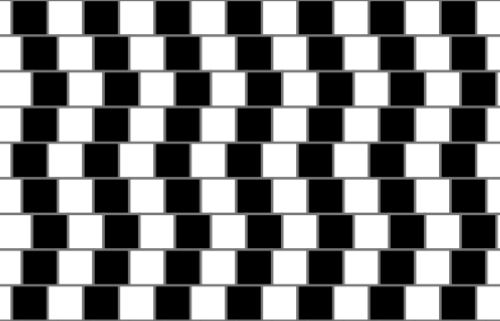
They are indeed parallel but appear to run at angles because of the staggered black and white boxes. This illusion is commonly known as the cafe wall illusion.

Loading...
Tagged in cafe wall, estimation, lines
Estimation
22 March 2012 No Comments Yet - Share Your Thoughts
Do you see a spiral in the image below?
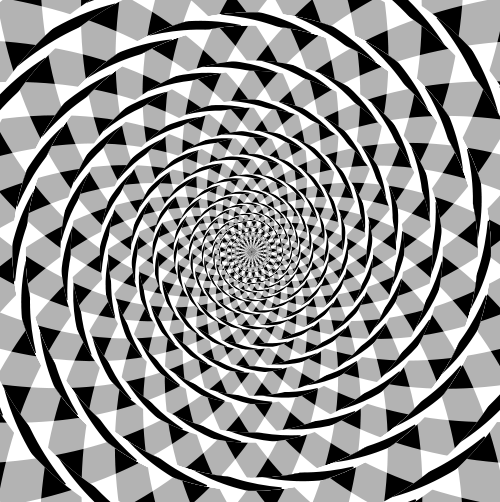
There is no spiral. This drawing consists of a series of concentric circles. This illusion, called the Fraser spiral was discovered by British psychologist James Fraser in the early 20th century.

Loading...
Tagged in circle, estimation, fraser, spiral, twisted cord
Miscellaneous
21 March 2012 No Comments Yet - Share Your Thoughts
Presented below is a series of black squares. Do you notice anything peculiar about this pattern?
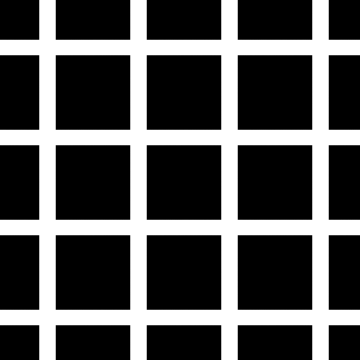
As your eyes scan this matrix, do you see dark phantom dots appear in the white intersections? This illusion was proposed by Ludimar Hermann in 1870. As such, it is referred to as the Hermann grid illusion.

Loading...
Tagged in grid, hermann, phantom, scintillating
Estimation
20 March 2012 No Comments Yet - Share Your Thoughts
Do the red lines below appear to bow outward? Or are they parallel?
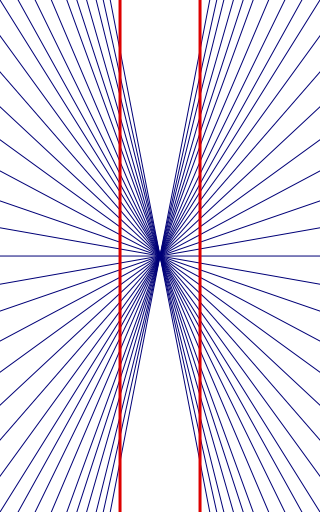
The red lines are straight and parallel and do not bow outward despite their appearance. This illusion, known as the Hering illusion, was discovered in 1861 by a German physiologist named Ewald Hering. The Hering illusion produces the opposite effect of the Wundt illusion.

Loading...
Tagged in estimation, hering, lines



 (3 votes)
(3 votes)





